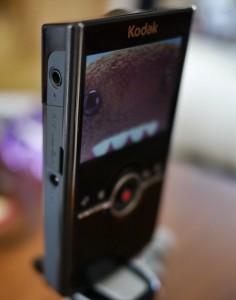Search Results for Tag: multimedia
Lessons learned from multimedia workshops
 Every multimedia workshop differs from the next, but the lessons learned by the participants are always very similar. One thing is certain: You need patience and perseverance.
Every multimedia workshop differs from the next, but the lessons learned by the participants are always very similar. One thing is certain: You need patience and perseverance.
It also helps to stay calm and collected when learning to use the tools and technologies. It’s much like long-distance running. You start out full of confidence and high expectations, then lactic acid builds up in your muscles. Suddenly you feel like you’re reaching a dead end, frustration and exhaustion make you want to throw in the towel. Rage rises up, causing you to ask yourself why you even bother. But in the end, when you’ve achieved your goal and you click that “publish” button, you feel a rush of satisfaction.
Like any kind of creative activity, working with multimedia can stir up emotions and fray your nerves. But it doesn’t have to be stressful. Follow these tips to stay nicely on top of your multimedia work without losing your head.
Don’t overdo it!
The Internet has unlimited possibilities. The temptation is huge to exhaust all those possibilities. That’s not always to the benefit of the user. And the user is the main point to keep in mind.
Multimedia projects are often overloaded, bursting at the seams with (sometimes sub-optimal) video, audio and photographic footage. Driven by their excitement about the technical potential, authors can easily lose sight of the actual story they’re trying to convey. Just think of the endless audio-video slideshows with thinly told stories and so-so orchestration, the masses of blurry photos and unsteady video clips.
Bear in mind your own capabilities and keep an eye on your time management.
![]() read more
read more
What makes a good blog post?
 Blogs make publishing literally anything online a breeze. And whether you’re a radio, TV, print or online journalist, a blog can offer a creative space to experiment, or a digital companion to your published or broadcast work – a sort of personal digital notebook – or, it can be whatever you want it to be.
Blogs make publishing literally anything online a breeze. And whether you’re a radio, TV, print or online journalist, a blog can offer a creative space to experiment, or a digital companion to your published or broadcast work – a sort of personal digital notebook – or, it can be whatever you want it to be.
Increasingly, many media outlets are using blogs in a more formal way – often giving journalists the freedom to explore a topic in more depth or take readers behind the scenes of their work.
But while technology makes blogging easy, starting out as a blogger and actually writing something worth reading can be a daunting task.
Blogging is a little bit like a digital writing adventure. And even though you might think someone is a good writer or a good journalist, that doesn’t necessarily mean they’ll instantly be a good blogger.
So, what follows here are a few tips to bear in mind for writing a good blog post.
![]() read more
read more
5 pocket video camcorder tips
 They’re small, relatively inexpensive and shoot high quality video. Pocket camcorders or “Flip” style video camcorders are a very useful tool for journalists, especially for producing video for the web.
They’re small, relatively inexpensive and shoot high quality video. Pocket camcorders or “Flip” style video camcorders are a very useful tool for journalists, especially for producing video for the web.
Just about all of the major camera manufacturers produce pocket video camcorders. And, it must be said that the HD video produced by many small point and shoot cameras and also smartphones now compete with these little wonders.
At present, the Kodak Zi8 is one of the main models the DW-Akademie uses during online journalism and web video courses. Flip is of course another well known brand, but these cameras are to be discontinued.
Whatever you use, it’s about the story and not the camera. But here are some of our tips for getting more out your camcorder and producing better quality web video.
![]() read more
read more
The best of multimedia formats
 The Web offers infinite possibilities. But not all of them are practical, necessary or recommendable. There are three basic rules that apply to multimedia productions: Less is more; it’s the story that counts; and the concept is more important than effects. This presentation shows you some multimedia formats that are worth a closer look.
The Web offers infinite possibilities. But not all of them are practical, necessary or recommendable. There are three basic rules that apply to multimedia productions: Less is more; it’s the story that counts; and the concept is more important than effects. This presentation shows you some multimedia formats that are worth a closer look.
![]() read more
read more
Taking first steps into multimedia with audio slideshows
For any journalist who has spent most of their career working only in one medium, be it in radio, print or photography, taking your first steps into multimedia can be exciting but also a little daunting.
One of the tools that many journalists in our workshops get really excited about is Soundslides. It's a programme that produces audio slideshows by combining photos and audio. For radio and print journalists it's a new way to add images to their storytelling, and for photo journalists to add narration and sound to their photos. Plus it’s affordable and very easy to use.
![]() read more
read more








Feedback